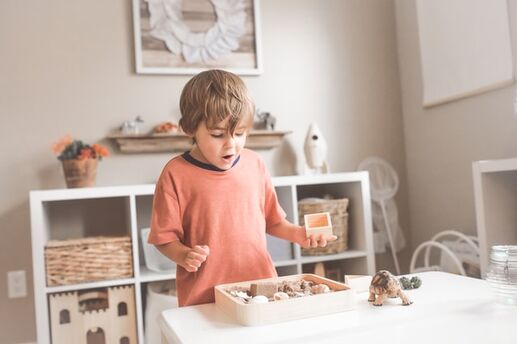Baby Development: The First Seven Months
From the time you take that beautiful newborn home to the day she turns 7 months old, your infant is busy with her baby development. It might be hard to believe that your newborn will grow so much in such a short amount of time, but within those few months, it might seem like you have a whole new baby.
Here are some of the baby development milestones to be on the lookout for during that time.
Social changes
By the time your infant is 7 months old, she’ll be well on her way to recognizing familiar faces -- like yours -- and she will probably even start to respond to emotional cues, such as crying when she hears angry voices. She’ll also start to gain an interest in others at this time. Your 7-month-old will enjoy playing socially, and will seem joyful and happy most of the time.
Language changes
Many 7-month-olds are able to string together vowel sounds when babbling (making noises like “ah,” “eh,” and “oh”), and they’ll constantly be chattering during this stage. Something that’s fun to watch for: Around this time, babies start to respond to their own names. Your baby may also begin to understand the word “no,” and even use her voice to let you know when she’s happy or sad!
Visual changes
At this stage, your baby will have developed the ability to recognize different colors, and she’ll be able to track moving objects more accurately. Your curious baby will start to look around more often, and will show an interest in items that are out of her reach. Be on the lookout -- at this age, your baby will try to put anything and everything into her mouth, so keep choking hazards out of the way.
Movement changes
Watch out: Your formerly immobile infant will suddenly develop all kinds of movement skills during these first 7 months. Her motor development is accelerated during this time. Before you know it, she’ll be able to roll from front to back and back to front, sit, support her weight on her legs, and transfer objects between her hands. By 7 months you might even start seeing some rocking movement in your baby -- or backwards crawling, which tends to develop before babies learn to crawl forward.
Keep in mind that every baby develops at her own pace, but the above list is a good general indicator of the early childhood development milestones you should start to see in your baby by the time she’s 7 months old. Keep track of when your baby reaches these milestones, and discuss her progress with her pediatrician at each visit to be sure she’s on track.
Photo by Marian G Ruggiero on Unsplash







